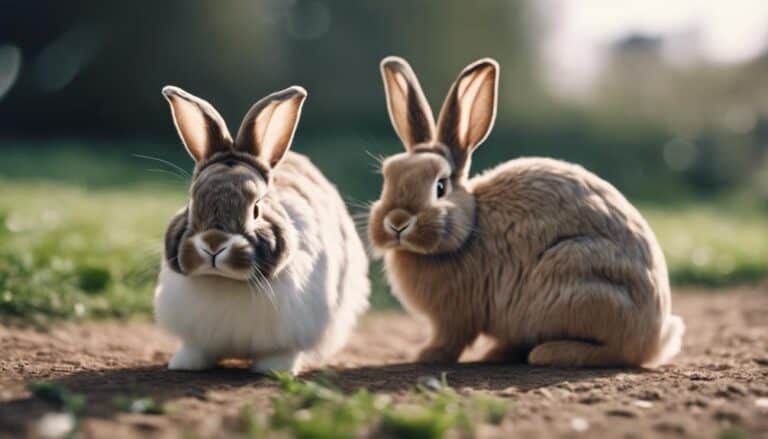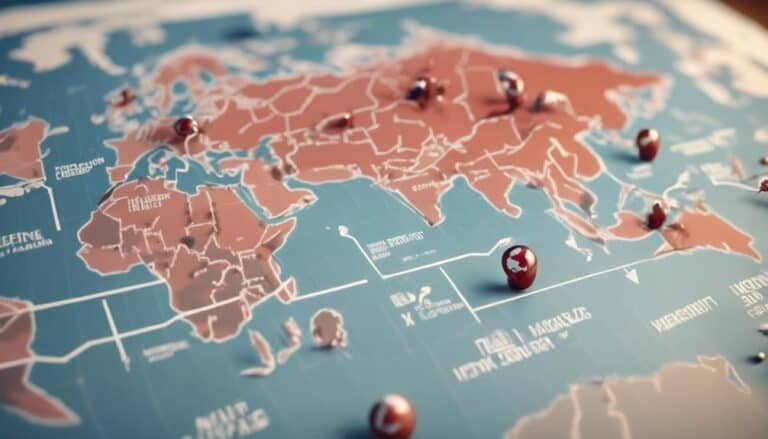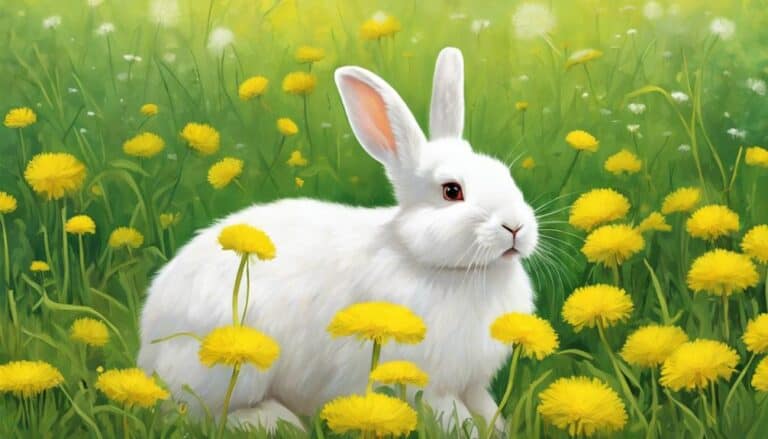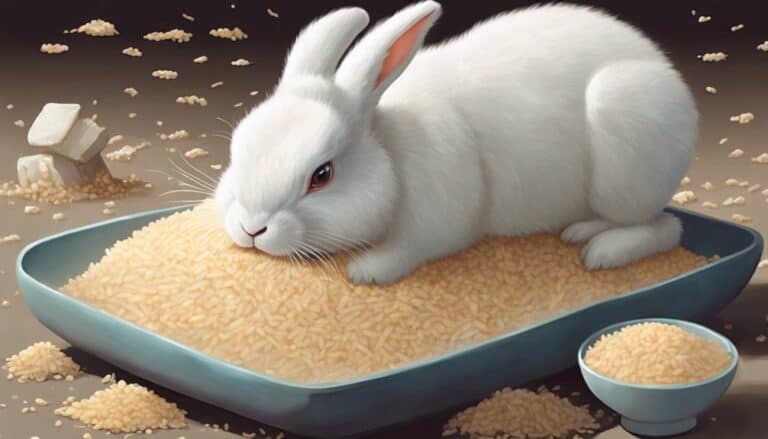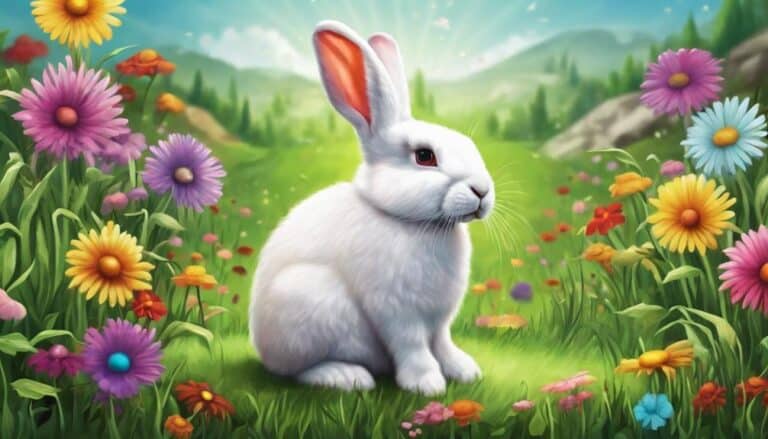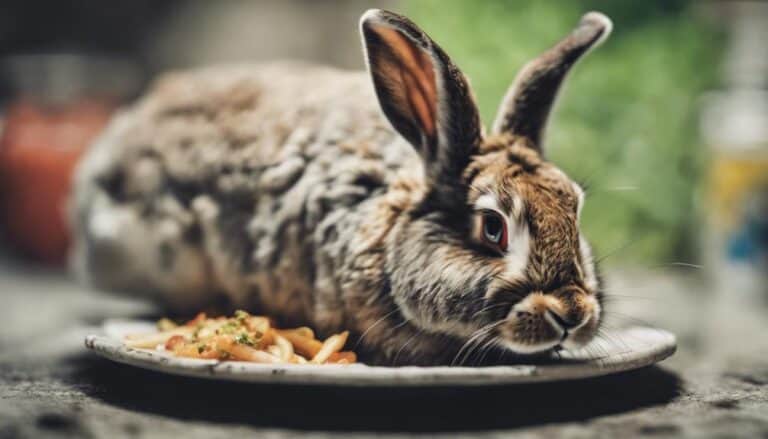The whole Easter bunny thing? Yeah, it goes way back to ancient times when people were all about celebrating fertility and new beginnings. It's like a blast from the past where rabbits and eggs were all about symbolizing these ideas.
So, check this out – German folks who came to America brought along this Easter Bunny tradition, which was totally influenced by the Osterhase thing. Back in medieval times, hares were all about being vigilant in church art and were linked to the Virgin Mary and Holy Trinity, which represented innocence and purity.
Oh, and get this – there's this pagan goddess named Ostara who was all about hares too, which just added to the whole Easter bunny vibe. This history lesson is pretty cool because it shows how the Easter Bunny is all about renewal, new life, and keeping traditions alive for ages, no matter where you are in the world.
Contents
- 1 Key Takeaways
- 2 Historical Origins of Easter Bunny
- 3 Medieval Church Symbolism
- 4 Easter Bunny and Virgin Mary
- 5 Link to Pagan Goddess Ostara
- 6 Modern Legends Reinforcing Connection
- 7 Evolution of Easter Bunny Symbolism
- 8 Easter Bunny Traditions Worldwide
- 9 Influence on Easter Decorations
- 10 Contemporary Easter Bunny Celebrations
- 11 Frequently Asked Questions
- 12 Conclusion
Key Takeaways
The Easter Bunny is connected to old traditions that celebrated fertility. When German immigrants came to America, they brought the Easter Bunny custom with them. In medieval times, hares were linked to the ideas of rebirth and starting anew, as seen in church symbolism.
The pagan goddess Ostara, who was associated with hares, likely influenced the Easter Bunny. Over time, the bunny became a symbol of Easter thanks to modern media and commercialization. So, now the Easter Bunny is a big part of the holiday, bringing joy to children everywhere.
Historical Origins of Easter Bunny
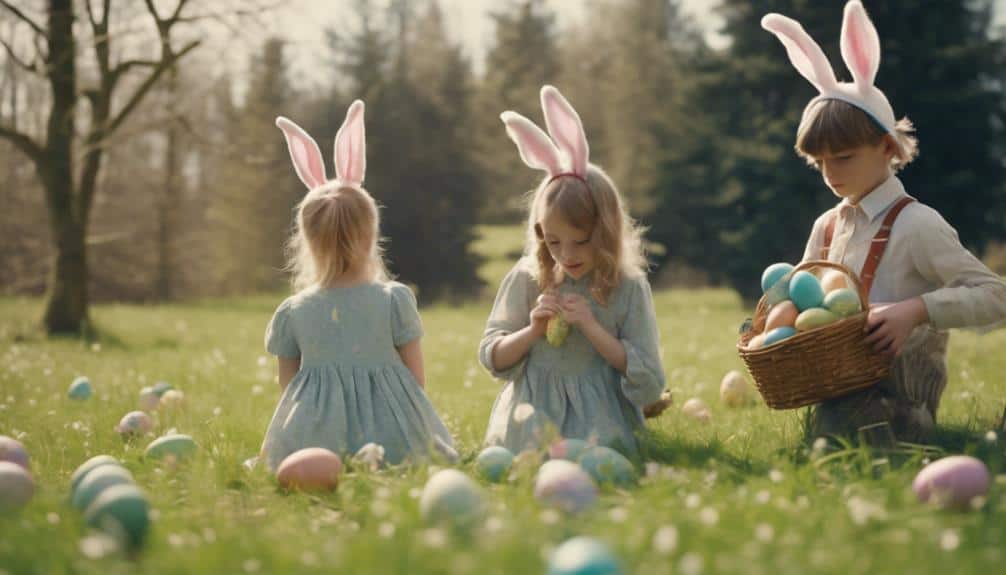
The Easter Bunny has a history that goes way back to ancient pagan festivals. People in those times used rabbits and eggs to symbolize fertility and new life. Rabbits were chosen because they're known for reproducing quickly, while eggs represent fresh starts.
In the 1700s, German immigrants brought the Easter Bunny tradition to America. They had a tradition of the Osterhase, a hare that lays eggs, which likely influenced the American version of the Easter Bunny. At first, kids would leave carrots out for the Osterhase, but over time, this turned into leaving carrots and other treats for the Easter Bunny.
The connection between rabbits, eggs, and fertility played a big role in shaping the Easter Bunny tradition. As it spread in America, it grew to include the Easter Bunny delivering chocolate, candy, and gifts. This made the Easter Bunny even more tied to the Easter holiday.
Medieval Church Symbolism
Let's dive into the fascinating symbolism found in medieval art and church imagery surrounding the hare. In the medieval church, the hare was seen as a symbol of vigilance, often connected to the watchful care of the Virgin Mary. It was also linked to the Holy Trinity, representing the Father, Son, and Holy Spirit.
The symbolism of hares in medieval art often revolved around themes of resurrection and rebirth, mirroring the religious significance of Easter symbols. Because of their association with fertility and new life, hares were a fitting symbol for Jesus' resurrection during the Easter season.
As time passed, the hare became deeply intertwined with Easter in medieval church symbolism, embodying ideas of renewal, fertility, and the celebration of divine life emerging from death.
Easter Bunny and Virgin Mary
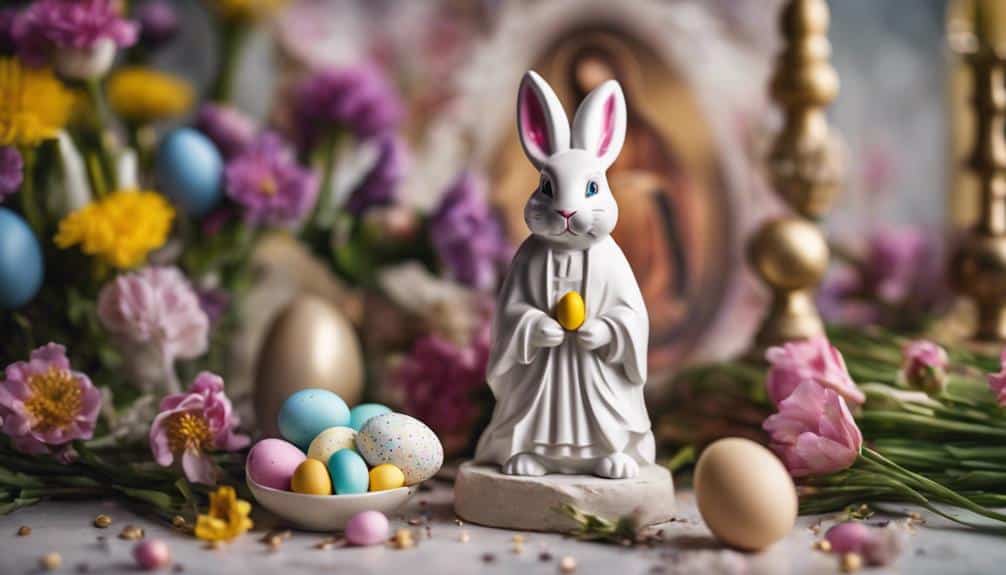
In medieval times, the Easter Bunny and the Virgin Mary were actually connected in a symbolic way. The hare, which was often linked to the Virgin Mary in church art from that time, had a deep meaning in Christian beliefs. People saw the hare as a symbol of purity and innocence, just like how they saw the Virgin Mary. It was a way to show her grace and spiritual importance.
The hare's tie to the Holy Trinity made it even more significant in Christian symbolism. It wasn't just about purity; hares also represented fertility, which was a big deal considering the Virgin Mary's role as Jesus' mother. In paintings and sculptures, hares were often shown as embodying grace and spiritual purity, adding to the reverence for the Virgin Mary.
Link to Pagan Goddess Ostara
Ostara, the pagan goddess of fertility, often hangs out with a hare buddy, which links her to the rabbit symbolism.
The name 'Easter' might've come from the Anglo-Saxon goddess Eostre, who's quite similar to Ostara.
The story of Ostara and her connection to hares probably played a part in creating the tradition of the Easter bunny.
Ostara's Bunny Connection
The bunny connection to Ostara, the pagan goddess of fertility and spring, goes way back to Anglo-Saxon times. It's all about celebrating the vernal equinox and the themes of rebirth and renewal in Easter traditions. Bunnies symbolize fertility and new life, which fits perfectly with the essence of Easter.
Ostara, or Eostre, represents new beginnings and growth, so her link to bunnies makes a lot of sense. The myth of Ostara and her connection with hares probably played a role in why bunnies became a symbol of Easter. This just adds to the long history of bunnies popping up in springtime festivities.
Symbolism of Rabbits
The reason why rabbits are linked to Easter goes way back to ancient times. They symbolize fertility and new beginnings, which are key themes during this holiday. In the past, pagans saw rabbits as a sign of abundance and renewal, especially in connection with the goddess Ostara and her association with hares.
For pagans, rabbits represented fertility and the start of spring. This made them a perfect fit for Easter, a time for new life and growth. Over the years, the connection between rabbits and Easter likely blended with Christian beliefs about resurrection and fresh starts. The hare's ability to reproduce was highly respected in pagan societies, reinforcing its tie to Easter's focus on new beginnings.
Today, the symbolism of rabbits and Easter is deeply ingrained in the holiday's customs around the world. It's a reminder of the joy and promise that come with the arrival of spring and the chance for a fresh start.
Easter Bunny Tradition
The Easter Bunny tradition has its origins in the pagan festival of Eostre, which symbolized fertility and new life. Basically, bunnies were seen as a symbol of fertility, which matched up with the themes of Easter – a Christian holiday that's all about Jesus coming back to life. So, it kind of made sense to bring those two ideas together.
In Germany, there was a character called Osterhase, who was believed to lay colored eggs for kids. This Osterhase probably had a hand in shaping the Easter Bunny as we know it today. When German immigrants came to America in the 1700s, they brought this tradition along with them. And over time, it morphed into the Easter Bunny that we all recognize now.
The connection between the Easter Bunny and Easter eggs reinforces the idea of new life and rebirth. This link makes the bunny a key figure in Easter celebrations, representing hope and the cycle of life. So, whenever you see that fluffy little bunny hopping around with colorful eggs, you can think of it as a symbol of renewal and the joy of Easter.
Modern Legends Reinforcing Connection
Modern legends nowadays keep strengthening the connection between bunnies and Easter in our society. These stories and portrayals in movies, books, and social media all help emphasize the image of bunnies as symbols of new beginnings, fertility, and the start of spring during Easter.
The way Easter has become so commercialized also plays a big part in cementing the link between adorable, fluffy bunnies and the joyous celebrations.
Easter Bunny Origins
The Easter Bunny has an interesting history that goes way back to ancient times when people celebrated fertility festivals. When German immigrants came to America in the 1700s, they brought along this tradition, which eventually evolved into what we know today.
So, why is the Easter Bunny linked to Easter? Well, it's believed that this association originated from those ancient fertility festivals. The bunny symbolizes rebirth, renewal, and the start of spring in modern Easter celebrations.
It's fascinating to think about how the Easter Bunny's origins have deep roots in history. From its beginnings in pagan festivals to its journey to America with German immigrants, the bunny has become a beloved symbol of Easter, representing new beginnings and the joy of springtime.
Bunny Symbolism Today
When we look at bunny symbolism today, we see a mix of traditions all tied to themes like fertility, rebirth, and the lively spirit of spring. The Easter Bunny is a big part of this, symbolizing the coming of spring and new beginnings.
Kids love the idea that the Easter Bunny brings eggs, connecting bunnies to Easter as a symbol of growth and new life. You can spot the Easter Bunny everywhere during Easter festivities, from decorations to parades, adding to the fun of the season.
Just like how Santa Claus is a big deal during Christmas, the Easter Bunny has also become a beloved figure, making its mark on Easter traditions worldwide.
Evolution of Easter Bunny Symbolism
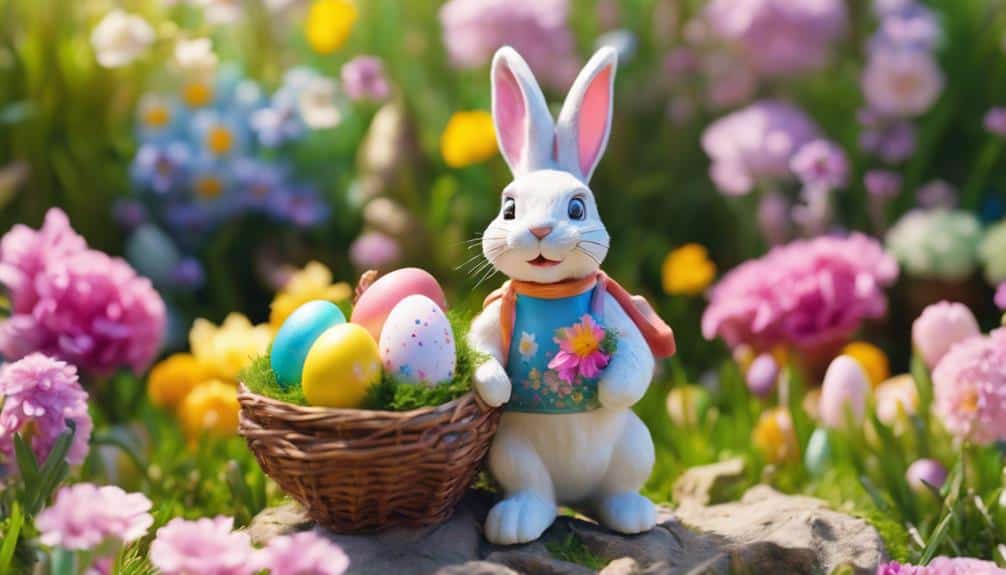
The Easter Bunny's symbolism has deep roots in ancient pagan beliefs that focused on fertility symbols. These beliefs set the stage for the Easter Bunny to become a significant figure in today's Easter celebrations.
So, where did it all begin? Well, the Easter Bunny's origins can actually be traced back to those ancient pagan beliefs that revolved around fertility symbols. They really emphasized ideas like new life and abundance.
It seems like German immigrants played a big role in bringing the Easter Bunny to America back in the 1700s. Once here, the tradition caught on and became a key part of Easter festivities.
And you know what really sealed the deal? The Easter Bunny's connection to eggs and candy. This link helped cement its place in American Easter traditions, symbolizing abundance, renewal, and the pure joy of the season.
Thanks to a mix of pagan symbolism, cultural shifts, and influences from immigrants, the Easter Bunny has evolved into a much-loved symbol of Easter. It now embodies themes like fertility, new beginnings, and the sheer delight of the spring season.
Easter Bunny Traditions Worldwide
Easter traditions around the world are pretty interesting. Different countries have their own special animals that bring gifts during this time of year. For example, in Australia, they've the Easter Bilby instead of the usual Easter Bunny. Switzerland likes to include the Easter Cuckoo in their celebrations, and in parts of Germany, you might see the Easter Fox or Easter Rooster instead of the bunny. It's cool to see how each of these animals plays a role in delivering Easter goodies like eggs, chocolates, and baskets to kids and families worldwide.
Each of these animals has its own cultural importance, adding to the diversity of Easter traditions globally. While the Easter Bunny, or Osterhase in German-speaking countries, is still a popular symbol of Easter, it's neat to see how other nations have their own unique gift-giving animals for this spring festival. These traditions really show how Easter is celebrated in so many different ways all over the world.
Influence on Easter Decorations
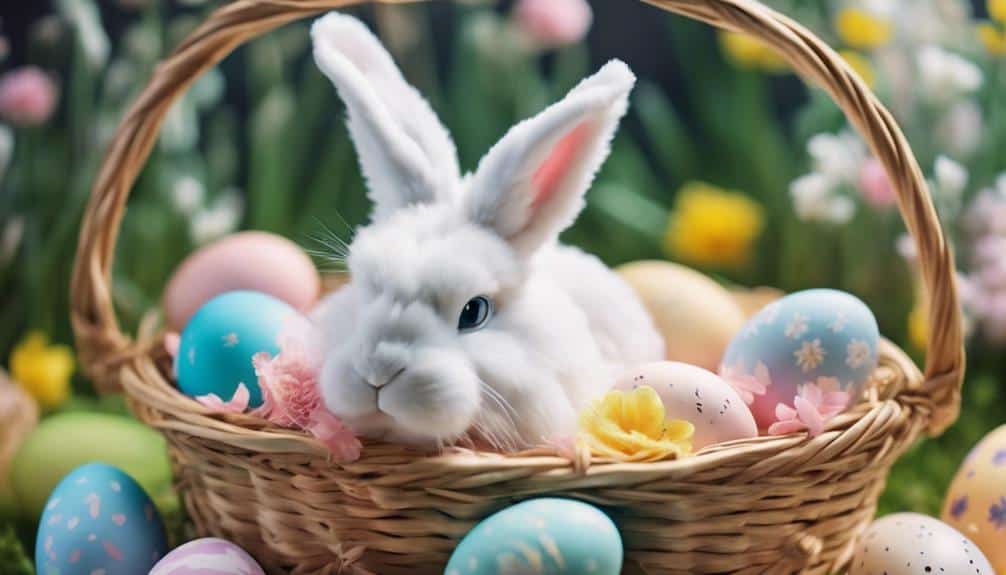
Bunnies have a big impact on Easter decorations because they symbolize fertility and new life. You'll often see bunny-themed decorations in various forms like figurines, wreaths, and table centerpieces. These decorations usually show bunnies in pastel colors to match the holiday's look. They're often paired with eggs and flowers to create a cheerful and festive vibe.
Contemporary Easter Bunny Celebrations
In today's Easter celebrations around the world, we see a mix of unique traditions involving the Easter Bunny. You'll find the Easter Bunny playing a key role in Easter festivities in many countries. At lively Easter parades, the bunny hops around with baskets filled with chocolates, toys, and goodies for kids to enjoy.
Australia has put an interesting spin on things with the Easter Bilby. This endangered marsupial has taken over the job of delivering gifts instead of the traditional Easter Bunny. Meanwhile, in Switzerland, they've the Easter Cuckoo, and in some parts of Germany, it's the Easter Fox that brings the treats. Each country has its own take on the gift-giving animal, adding a special touch to the celebrations.
Over time, the contents of Easter baskets have expanded to include a variety of gifts brought by these symbolic creatures. This adds to the happiness and anticipation of the season. The Easter Bunny has crossed boundaries to become a universal symbol of new beginnings, rejuvenation, and the start of spring. Its enduring charm and meaning have enriched modern Easter festivities worldwide.
Frequently Asked Questions
Why Are Rabbits Symbolic at Easter?
Rabbits are a big deal at Easter because they represent fertility and new life. It's all about growth and renewal during this holiday. The whole idea comes from ancient beliefs and traditions that have stuck around for a long time. So, when you see those cute bunnies hopping around at Easter, remember they're more than just fluffy animals—they carry some deep meanings with them.
Why Did Easter Turn Into Bunnies?
Have you ever wondered why Easter is associated with bunnies? Well, it all goes back to fertility symbols and ancient folklore. Over time, Easter traditions started incorporating rabbit symbolism as part of the spring celebrations. The myths of bunnies eventually became intertwined with Easter eggs, solidifying the bunny's significance in the holiday.
How Is the Easter Bunny Related to Jesus?
The Easter Bunny doesn't have a direct religious connection to Jesus. It's more about symbols and fun traditions. The bunny brings joy and excitement to Easter, adding to the festive spirit. It's not really about Jesus, but more about spreading happiness and treats.
Why Is It the Easter Bunny and Not a Chicken?
The reason we have the Easter Bunny instead of a chicken is because the bunny symbolizes fertility and new life, which go hand in hand with the themes of Easter. The origins of the rabbit, its association with spring, and its connection to eggs all play a part in why it's the Easter Bunny we think of.
Long ago, stories and folklore about bunnies being prolific breeders added to their image of fertility. Spring is a time of new beginnings and growth, making the bunny a fitting symbol for Easter, which celebrates rebirth and renewal. And since rabbits and eggs are both symbols of fertility, it makes sense that they became linked in Easter traditions.
Over time, these associations with bunnies, eggs, and spring were woven into Easter celebrations. The cultural evolution of these traditions, along with influences from pagan rituals, helped solidify the Easter Bunny's place in our modern holiday celebrations. So, next time you see a fluffy bunny hopping around with a basket of eggs, you'll know why it's the Easter Bunny and not a chicken!
Conclusion
Have you ever wondered how the Easter Bunny became such a popular symbol? It's pretty fascinating when you think about all the different historical, religious, and cultural influences that have come together to create this beloved figure.
The Easter Bunny actually has its origins in ancient pagan goddess worship, but over time it has evolved into a fun and whimsical part of modern-day Easter celebrations. Now, when we think of the Easter Bunny, we often associate it with chocolate eggs and springtime festivities.
It's amazing to see how this fluffy icon has become such a colorful and vibrant part of our traditions. The history behind the Easter Bunny is like a beautiful tapestry that we can admire and enjoy. It's a reminder of how we're connected through time and space, celebrating together across generations.

